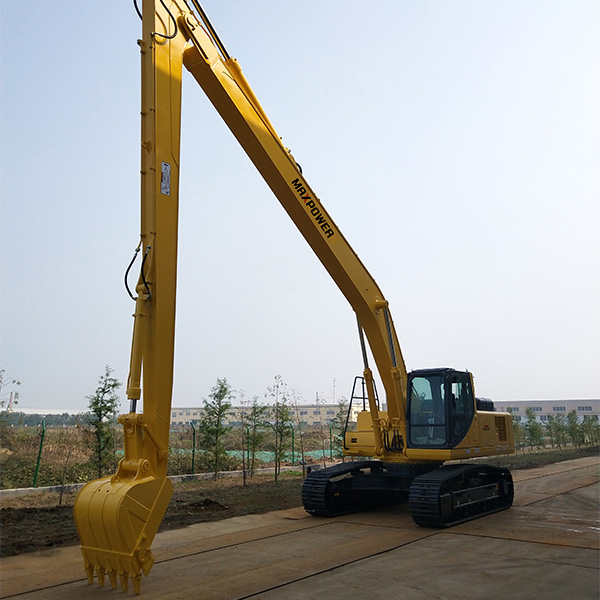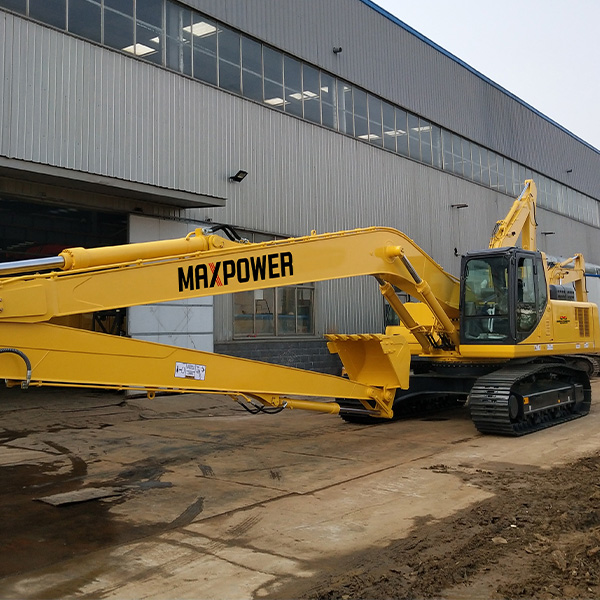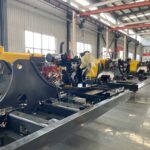Introduction
In the realm of construction and heavy industry, the big excavator stands as a symbol of progress and efficiency. These powerful machines are designed to handle the most demanding tasks with precision and speed. As the industry continues to evolve, the role of big excavators becomes increasingly vital in ensuring that projects are completed on time and within budget. This blog post delves into the various aspects of utilizing big excavators to maximize efficiency on construction sites.
Understanding the Capabilities of Big Excavators

Big excavators are engineered to provide a range of capabilities that are unmatched by smaller machinery. These machines are designed to dig, lift, and move large quantities of material with ease. They are equipped with powerful engines, robust hydraulic systems, and state-of-the-art control mechanisms that allow operators to perform complex tasks with precision.
Engine Power and Performance
The engine power of big excavators is a critical factor in their ability to perform. High-horsepower engines enable these machines to tackle the most challenging tasks, from moving large boulders to digging deep foundations. The performance of the engine directly impacts the efficiency of the excavator, making it essential to select the right machine for the job at hand.
Hydraulic Systems and Controls
The hydraulic systems of big excavators are responsible for amplifying the force generated by the engine. These systems use a series of pumps, valves, and actuators to transmit power to the machine’s various components. Advanced control systems allow operators to fine-tune the hydraulic performance, ensuring that the excavator can execute tasks with precision and accuracy.
Efficiency Optimization Techniques Table:
| Technique | Description |
|---|---|
| Proper Equipment Selection | Selecting the right size and type of excavator for the task |
| Efficient Planning and Scheduling | Creating detailed plans and schedules to optimize workflow |
| Regular Maintenance and Inspections | Performing routine checks and servicing to prevent downtime |
| Operator Training and Skill Development | Providing training to operators for optimal machine use |
| Utilization of Advanced Features | Leveraging machine features such as GPS and automation |
Innovative Technologies for Enhanced Efficiency
As technology continues to advance, so too does the efficiency of big excavators. Manufacturers are constantly developing new features and systems to improve the performance and productivity of these machines.
Automated Control Systems
Automated control systems are becoming increasingly prevalent in big excavators. These systems use sensors and algorithms to monitor the machine’s performance in real-time, making adjustments to optimize efficiency. By automating certain functions, operators can focus on the task at hand, leading to reduced fatigue and improved precision.
Telematics and Data Analysis
Telematics is another area where big excavators are seeing significant improvements. By connecting machines to the internet, operators can monitor their performance from a remote location. Data collected from these machines can be analyzed to identify trends and areas for improvement, leading to more informed decision-making and increased efficiency on the job site.
Optimizing Operator Performance
The efficiency of a big excavator is only as good as the operator controlling it. To maximize the potential of these machines, it’s essential to optimize operator performance through training and support.
Comprehensive Training Programs
Providing comprehensive training programs for operators is crucial to ensuring that they understand the capabilities and limitations of big excavators. Training should cover the operation of the machine, maintenance procedures, and safety protocols. By investing in operator training, companies can ensure that their big excavators are being used to their full potential.
Continuous Support and Resources
In addition to training, providing ongoing support and resources for operators is essential. This can include access to technical support, maintenance services, and up-to-date information on best practices. By ensuring that operators have the support they need, companies can maximize the efficiency of their big excavators and reduce downtime.
Incorporating Big Excavators into Project Planning

To fully harness the power of big excavators, it’s important to incorporate them into the overall project planning process. This involves assessing the needs of the project, selecting the appropriate machinery, and developing a strategy for using the excavators effectively.
Assessing Project Needs
Before selecting a large excavator, it’s important to assess the specific needs of the project. This includes evaluating the scale of the project, the type of material being moved, and the environmental conditions. By understanding these factors, project managers can choose the right excavator for the job, ensuring that the machine is well-suited to the task at hand.
Developing a Strategy for Effective Use
Once the appropriate large excavator has been selected, it’s important to develop a strategy for its effective use. This includes creating a detailed plan for how the machine will be deployed, scheduling maintenance and repairs, and monitoring its performance throughout the project. By developing a comprehensive strategy, project managers can ensure that their big excavators are being used to their full potential, leading to increased efficiency and productivity.
Conclusion
Big excavators are powerful tools that can significantly enhance the efficiency and productivity of construction and heavy industry projects. By understanding the capabilities of these machines, leveraging innovative technologies, optimizing operator performance, and incorporating big excavators into project planning, companies can fully harness their potential. In conclusion, the strategic use of large excavators is a key factor in achieving project success, and by following the guidelines outlined in this blog post, industry professionals can ensure that they are maximizing the efficiency of these powerful machines.
FAQs
What is the average fuel consumption of a big excavator?
The fuel consumption of a large excavator can vary greatly depending on the model, engine size, and the specific task it is performing. On average, a big excavator can consume between 15 to 40 gallons of diesel per hour.
How do I know if I need a big excavator for my project?
Consider the size and scope of your project, the type and amount of material that needs to be moved, and the environmental conditions. If your project requires the movement of large quantities of soil, rock, or other materials, a big excavator may be necessary.
What maintenance is required for big excavators?
Regular maintenance is crucial to ensure the longevity and performance of a big excavator. This includes checking and changing the engine oil, inspecting and replacing hydraulic filters, greasing moving parts, and performing regular engine tune-ups.
What safety precautions should be taken when operating a big excavator?
Operators should always follow the manufacturer’s safety guidelines, wear appropriate personal protective equipment, and ensure that the work area is free of hazards. Additionally, operators should be properly trained and certified to operate the machinery.







-150x150.webp)
